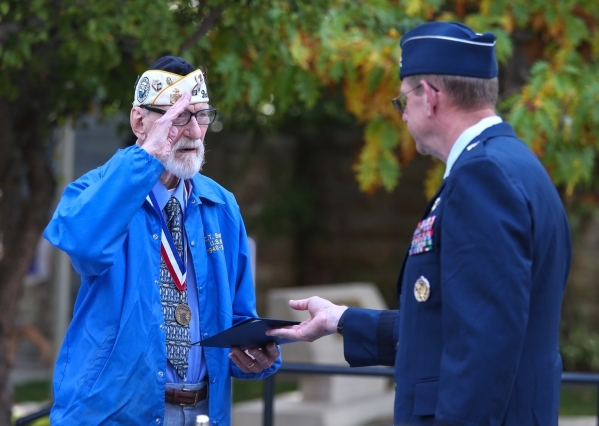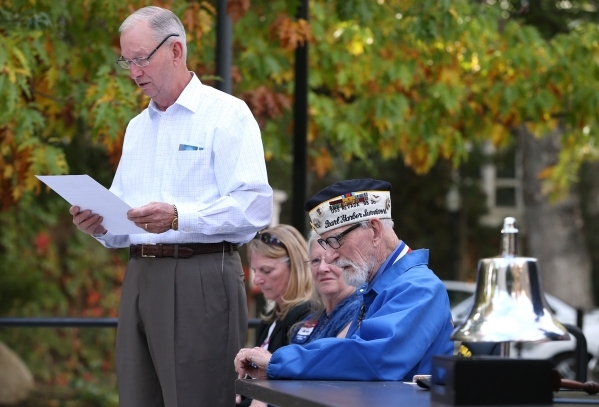State welcomes one of USS Nevada’s last living survivors




CARSON CITY — Charles Sehe was 18 on that day of infamy on Dec. 7, 1941, serving aboard the U.S.S. Nevada when the Japanese attacked Pearl Harbor and thrust the U.S. into World War II.
Now 92, Sehe is without a doubt one of the few living survivors of that attack, which saw Nevada’s namesake battleship get underway, the only one of eight to do so. Seriously damaged by torpedoes and bombs, the Nevada ran aground and got back into action in April 1942.
Sehe, of Mankato, Minn., served on the ship throughout the war, including campaigns to drive the Japanese out of the Aleutian Islands, the Normandy Invasion at Utah Beach on June 6, 1944, the Iwo Jima invasion on Feb. 16, 1945, and the Okinawa invasion on April 9, 1945, where the Nevada withstood a kamikaze attack but saw 12 crew members killed.
Sehe visited Nevada for the first time Wednesday and had the opportunity to see some of the surviving relics from the battleship housed in various locations in Carson City.
He was honored by Gov. Brian Sandoval’s staff at a ceremony at the USS Nevada Memorial on the Capitol grounds. In addition to a proclamation and other gifts, Sehe got to ring the original bell from the Nevada.
He also saw the ship’s wheel, which is on display in Sandoval’s office in the state Capitol.
Sehe said the entire crew was “damn proud” to serve on the Nevada. The ship provided the best gunfire support in the Navy, he said.
“We were all teenagers,” Sehe said. “We didn’t join the Navy to fight a war, we fought to live. I was a stunned witness to the last moment of peace in America and her first moment of war.”
Sehe, who was only 17 when he enlisted, saw some of his shipmates die when the nearby battleship USS Arizona exploded during the Pear Harbor attack.
He had just finished breakfast aboard the Nevada about 8 a.m. that Dec. 7 when the first aerial torpedo hit. He rushed to his battle station high on one of the ship’s masts and saw firsthand the destruction that killed 60 crew members and 2,403 Americans in total.
In an account of the kamikaze incident at Okinawa, Sehe called it the USS Nevada’s second day of infamy.
He recounted in “Swift Wings of Death” that the plane that came in low on the starboard side and crashed on the main deck aft near the No. 3 main battery turret. The forceful explosion sent up a fiery flame upward and left a gaping hole in the deck, exposing a crew’s living quarters below. Flying shrapnel raced throughout the starboard 40 mm quad mounts and 20 mm gun sites, killing seven Marines and five sailors and wounding, over 55 personnel with burns and multiple shrapnel fragments.
“It really did not make sense to this now seasoned gunner that this Japanese pilot chose death to serve Japan’s need for victory, for I was fighting in this damn war in order to live and to return home again,” he wrote.
He did just that, using the GI Bill to earn three college degrees including a doctorate. He taught and did research at different colleges and universities, retiring after 43 years as professor emeritus from Mankato State University in 1990.
Sehe has outlasted the Nevada as well.
Launched at Quincy, Mass., on July 11, 1914, the battleship saw service in World War I and World War II. After the war, it was used as a target for nuclear tests at Bikini Atoll, but it did not sink. It was finally sunk intentionally off of Hawaii in 1948.
Contact Sean Whaley at swhaley@reviewjournal.com or 775-687-3900. Find him on Twitter: @seanw801












